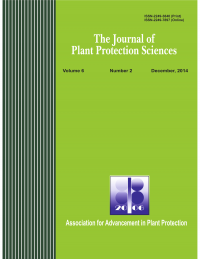ABSTRACT
Field experiment was conducted during rabi season at Raipur, Bankura, West Bengal to study the effect of few insecticides against mustard aphid, Lipaphis erysimi K. on rapeseed (Brassica juncea L.). Experiment was laid out in Randomized Block Design with eight treatments. Insecticides used in the experiments were imidacloprid 17.8% SL at 27g a.i/ha, lambda-cyhalothrin 5% EC at 25g a.i/ha, chlorpyriphos 20% EC at 375g a.i/ha, dichlorvos 75% EC at 375g a.i/ha, thiamethoxam 25% WG at 27g a.i/ha, dimethoate 30% EC at 375g a.i/ha and chlorpyriphos 50% + cypermethrin 5% EC (Canon) at 375g a.i/ha. Chlorpyriphos (93.50%) found to be most effective treatment followed by chlorpyriphos + cypermethrin (92.76%), thiamethoxam (90.70%) and imidacloprid (90.46%) and dichlorvos (82.81%) showed least effective. Highest yield was recorded from chlorpyriphos + cypermethrin (18.45 q/ha) treated plot followed by thiamethoxam (17.86 q/ha), chlorpyriphos (17.50 q/ha) and imidacloprid (16.75 q/ha) and lowest in dichlorvos treated plot (1: 10.27). Incremental cost benefit ratio indicated that highest return was obtained from imidacloprid (1:16.12) followed by lambda-cyhalothrin (1: 15.68) treated plot.
To share on other social networks, click on any
share button. What are these?






